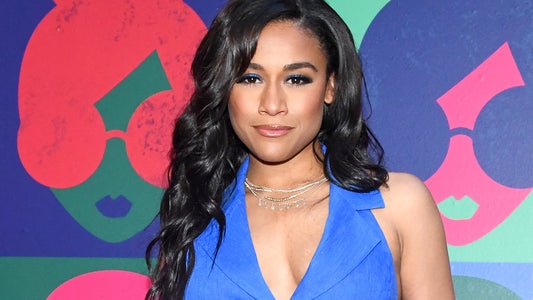
IMAGE: HBO Max
Like anyone with an HBO subscription and a deep desire to freak out on the couch, we’ve been glued to The Last of Us. Based on a popular video game, the apocalyptic thriller is about a fungi called cordyceps that “invades” human brains and essentially makes them zombies. The show is electrifying, gross, funny, and sometimes quite beautiful—especially when it reveals the massive killer fungal growths that stamp many buildings like organic graffiti. (Some of the zombies also feature split mushrooms for heads, which is either hysterical or terrifying, depending on how much tequila you’ve had before tuning in.)
The Last of Us stars the capably dreamy Pedro Pascal as a wayward missionary desperate to escape his demons, and the defiant, superb Bella Ramsey as a cynical teen who may be the key to ending this outbreak. But its ultimate focus is fungi itself, and that’s a little stressful for environmentalists and mycologists, the scientists who study mushrooms. After all, the whole point of mycology is to defend and conserve fungi at risk from deforestation and pollution. Is it really a good PR move to turn mushrooms into monsters?

Is The Last of Us Good for Mycology?
Actually, “it’s great,” says Dr. Charissa de Bekker, a Dutch mycologist who studies Cordyceps at the Utrecht University in The Netherlands. She tells Vox that because of The Last of Us, “Finally, fungi are hip and happening. I hope the show sparks some interest in fungi in general, because they’re incredibly fascinating organisms. They’re more important than people might think.” Mycelium are “completely overlooked,” agrees Dr. David Hughes, a mycology expert whose research papers were consulted for the original Last of Us video game, and who recently broke down the (minimal) dangers of Cordyceps for the Washington Post. “It’s interesting to get people to think about this.”

Are the Fungi on The Last of Us Real?
As for Cordyceps, they are a real species of mycelium that can develop a parasitic relationship with ant colonies—and even alter their behavior, eventually killing the ants. Savage? Sure. Proof they’ll eventually turn us into zombies? Nope. As New York Botanical Gardens mycologist João Araújo puts it, “If [Cordyceps] really wanted to infect mammals, it would require millions of years of genetic changes.” Araújo tells National Geographic that these fungi have been evolving “for about 45 million years,” so the odds that they’ll suddenly CTL-Z their way into eating our brains is honestly not happening.

Mushrooms Aren’t Villains—They’re the Core of Biodiversity
So what do you need to know about the power of fungi, otherwise known as mycelium or mushrooms? Thanks to our friends at the Fungi Foundation, we can help get you started on that answer. First, fungi aren’t plants or animals—they’re a distinct organism responsible for maintaining the balance of the ecosystem. In fact, fungi are nature’s ultimate multitaskers. These living things help compost dead organic matter back into the earth—everything from fallen bark and leaves to bones—and help regulate levels of nitrogen, oxygen, and carbon in the soil. Fungi include mushrooms, yeast, and mold. Without fungi, there would be (literal) tons of decaying matter left on earth. Without fungi, we would also not have sourdough bread, which would be terrible.

You Can Use Mycology for Your Own Wellness Goals
If you want to learn more about mycology, and how to use fungi for better personal and planetary wellness, there are many ways into mushrooms that don’t involve zombie brains.
For starters, you can take the small step to learn the names of some common fungi, because as author Robin Wall Kimmerer puts it, “when we call a place by its name, it is transformed from wilderness to homeland.” When we call local fungi by their names, they’re transformed from random mushrooms into our neighbors—not our video game antagonists. You can do it through an online guide, an app like Book of Mushrooms, or even Google Lens, which can provide IDs in just a few seconds.
Next, try incorporating fungi like snow mushrooms into your skincare routine, which can provide skin cells with a major dose of reparative moisture, helping skin stay “bouncy” and radiant with added elasticity.
RELATED: TREMELLA MUSHROOMS ARE THE BEST VEGAN COLLAGEN SOLUTION
Mushrooms are also a major source of nutrition because they’re loaded with fiber, Vitamin D, and an ability to better boost collagen in your skin and joints. They can be taken in supplements, and as part of many recipes (including our favorite for vegan Crunchwrap Supremes).
Recent research has also proven that psychedelic mushrooms, when used under a doctor’s care, can help with some chronic mental health conditions, including PTSD and depression. And Stella McCartney even used mushroom leather to make her latest “It” bag, which—while not clinically proven—is also known to make fashion fans feel a lingering sensation of euphoria when worn.

Here’s How to Learn More About Mycology
Start by visiting The Fungi Foundation’s FF Curriculum, a set of lessons about mushrooms, spores, and mycelium. All the downloads are free, and compiled by mycologists and environmental experts. You might also enjoy Entangled Life, a book by Merlin Sheldrake that explains the complex networks created by mushrooms that benefit soil health and air quality. None of the mycology experts who created these valuable resources have turned into zombies, so really, you should be fine.



